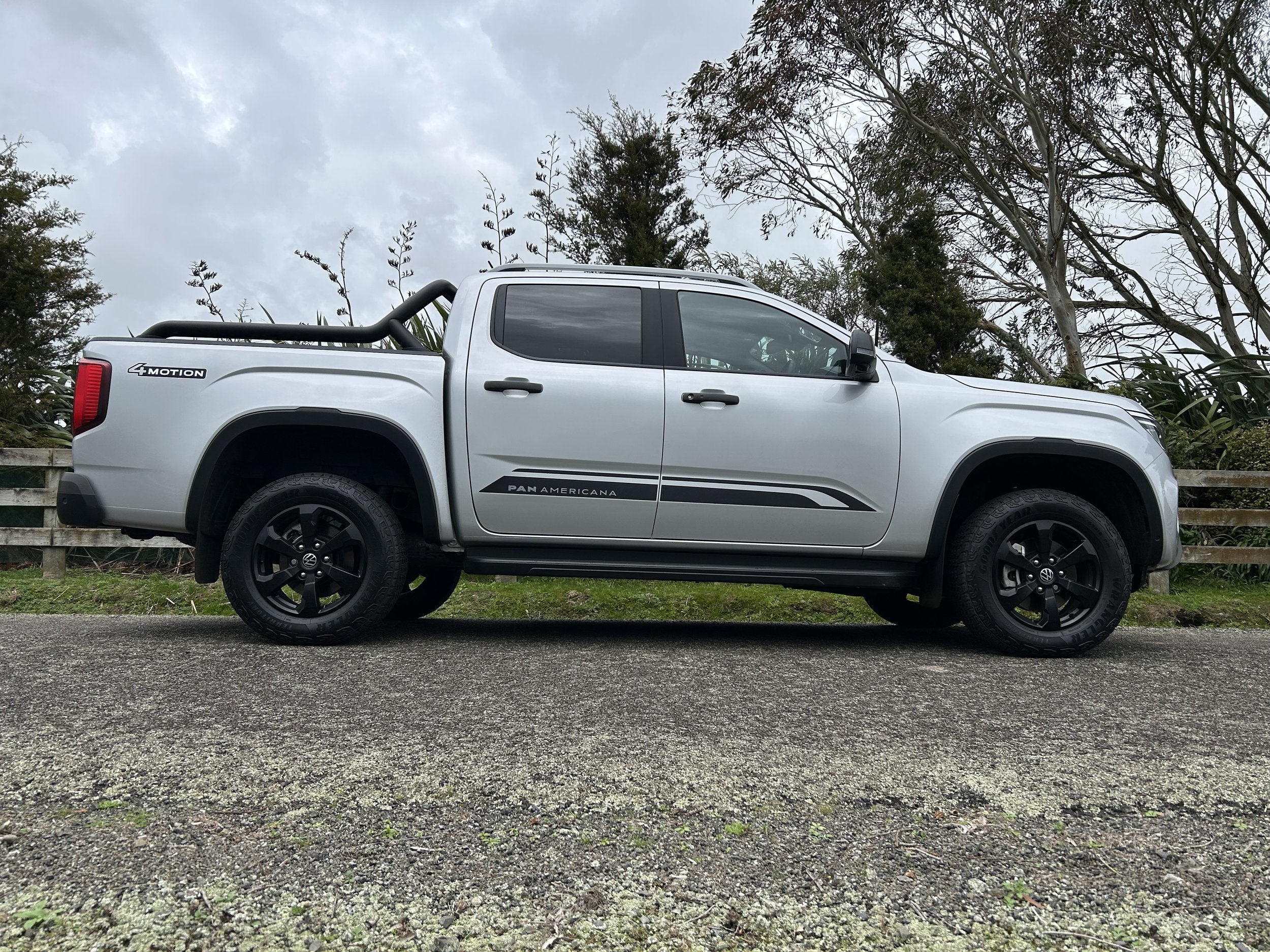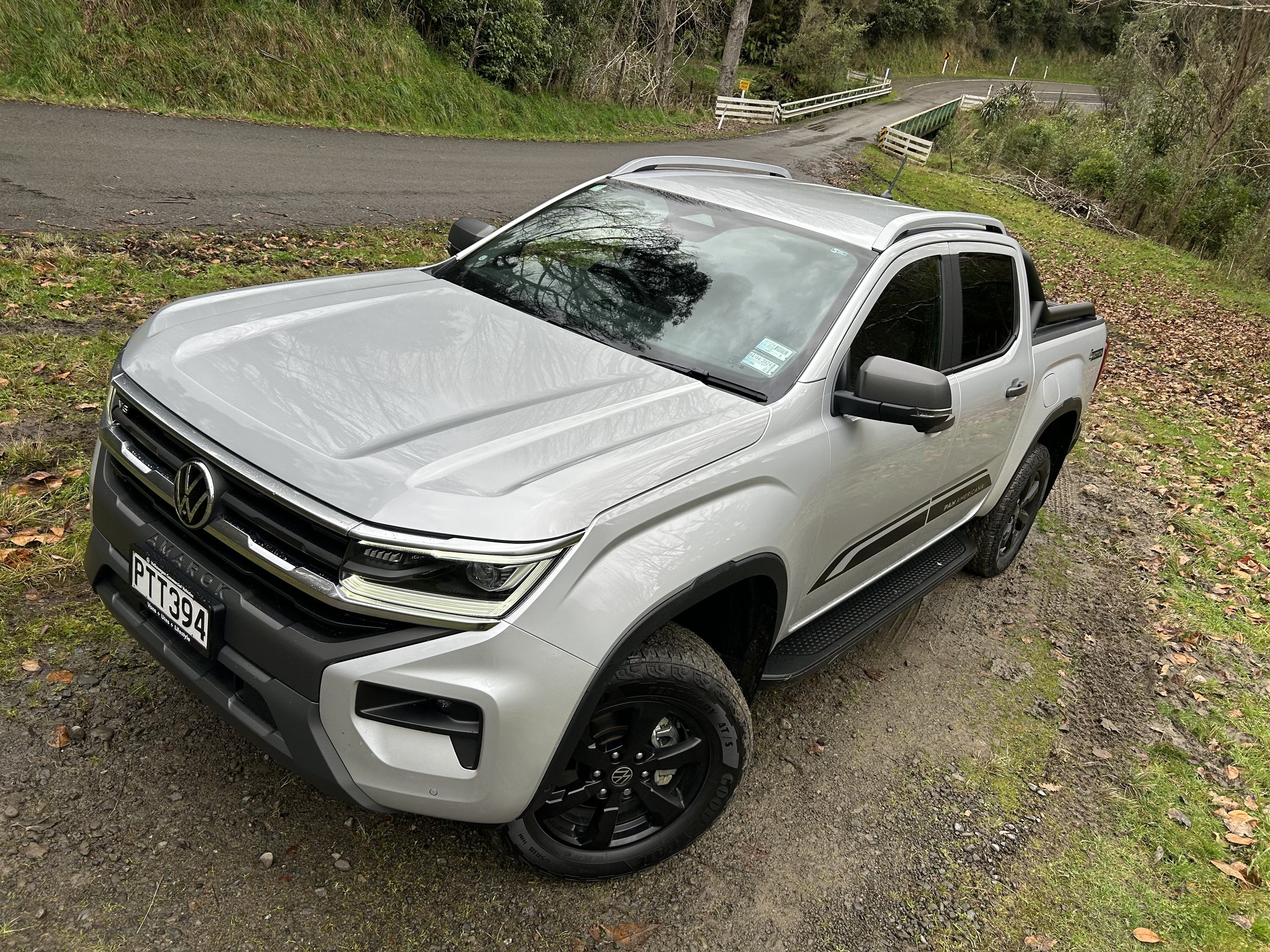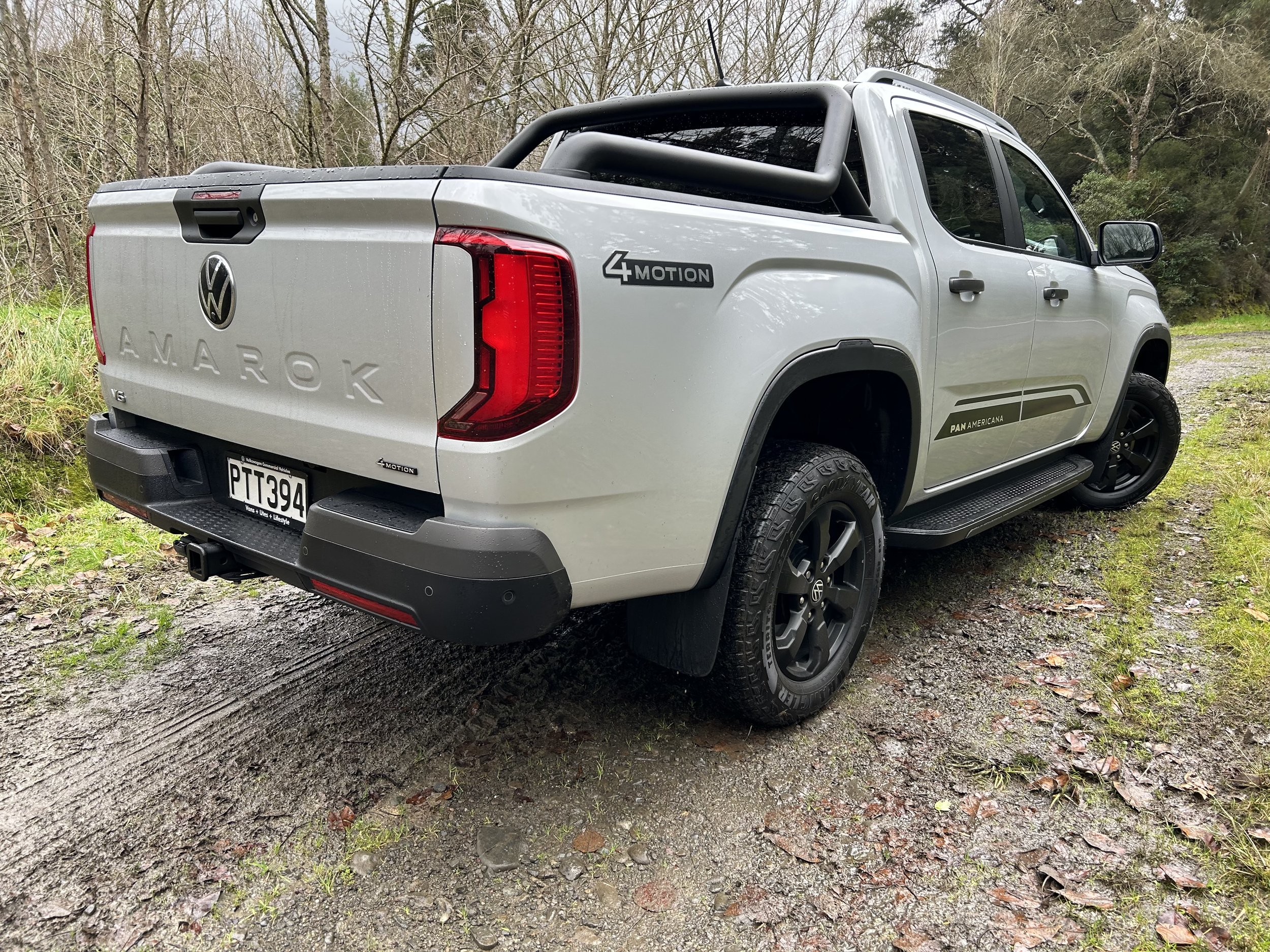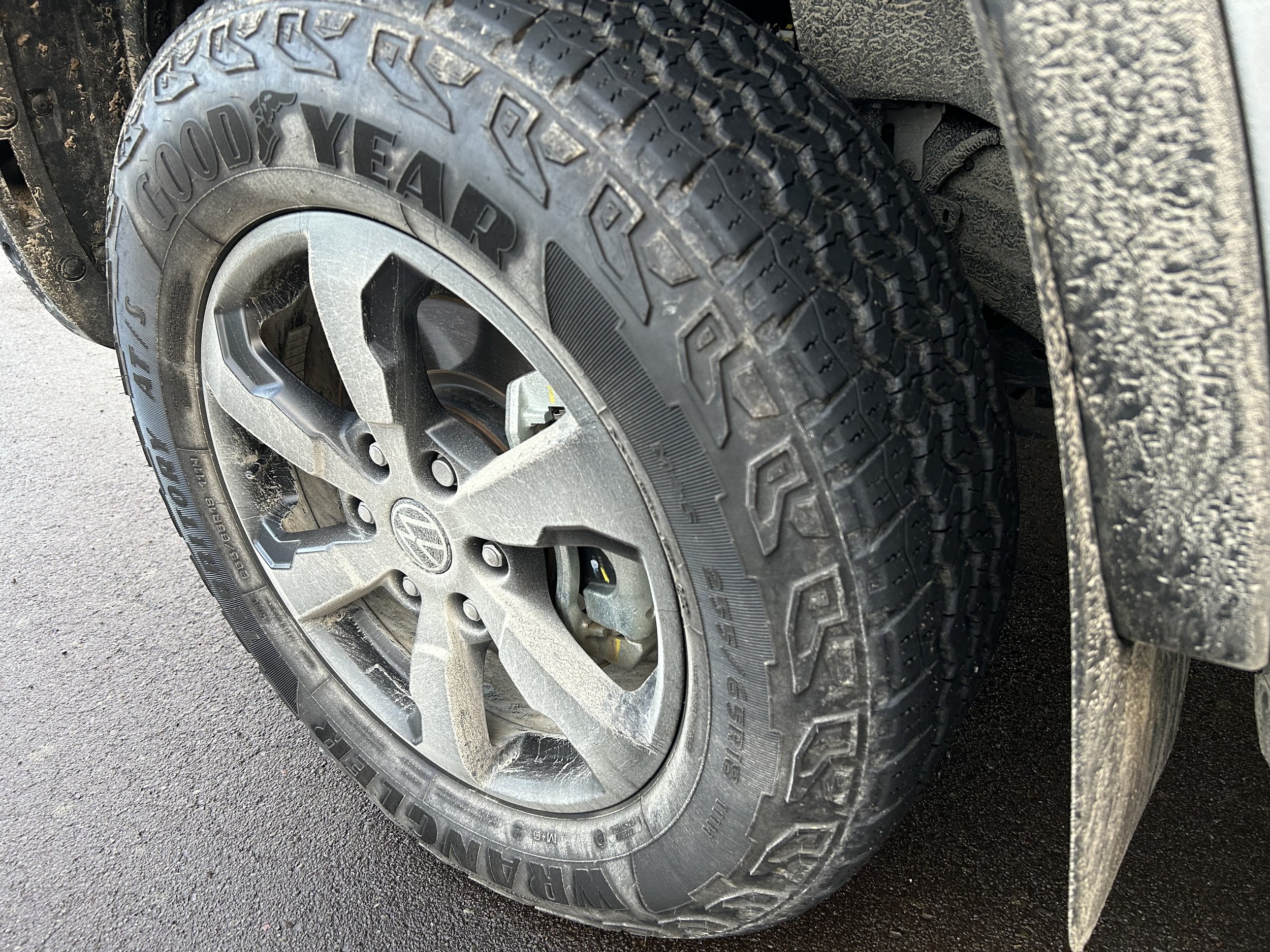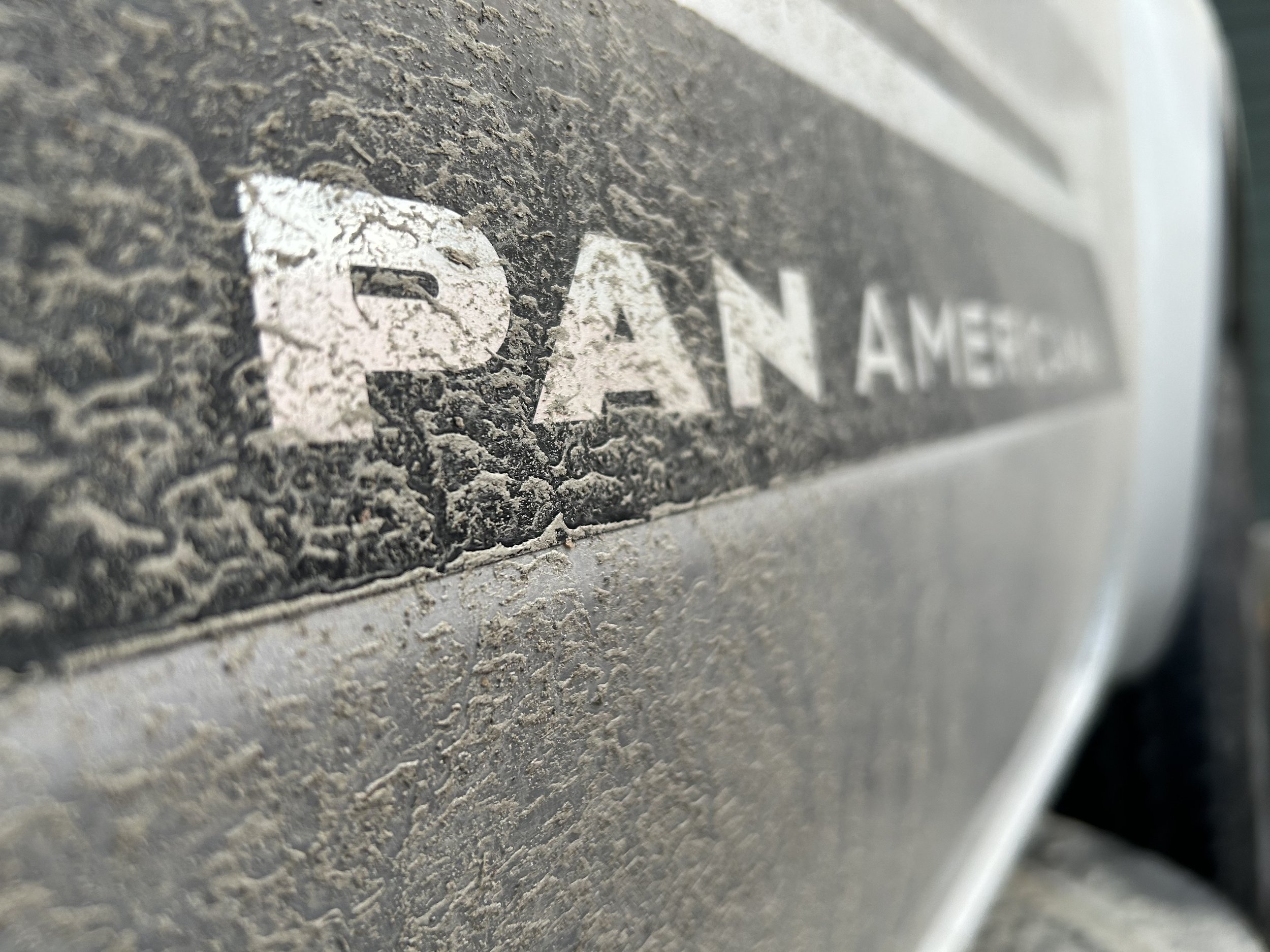Volkswagen Amarok Panamericana V6 roadtest review: Derring blue
/If you’ve tried and enjoyed the best, will it be a surprise that the ‘wurst’ version is actually just as tasty, perhaps even moreso?
Price: $88,000.
Powertrain: 3.0-litre turbo diesel V6, 184kW/600Nm, selectable 4WD, 10-speed auto, cited economy and emissions 9.6L/100km, 254g/km.
Vital statistics: 5350mm long, 1910mm wide, 1884mm high, 3740mm wheelbase, 255/65 R18 tyres.
We like: VW imprint is extensive and improves flavour; ramped up safety spec.
Not so much: Losing paddle shifters hurts; expensive; Aventura seems more logical in everyday use scenario.
OBVIOUS if you think about it, but worth reminding nonetheless: If it mainly comes down to badge prowess, don’t sweat the similarities.
Quality time with the Amarok utility in its Panamericana format enforces that the ‘Rangerok’ stuff shouldn’t cause friction at consumer level.
Here’s the thing. That Ford and Volkswagen were happy cohorts during their vehicles’ development shows in their respective offers. Ranger is a great ute. We know this. So is Amarok.
Which is better when the pair share the same T6 architecture, the same powertrains, the same all-wheel-drive system - to which Germany cunningly attaches their familiar 4Motion label - and the same 10-speed automatic transmission?
Honestly, there’s good reason for suggesting that question hardly warrants consideration. Regardless that all the core elements being common means there’s a lot that is alike - and, as result of that, there’s a lot to like - there’s less ammunition to feed any particular area of dominance in a 'us versus them’ gunfight than you might imagine.
‘Rangerok’ just isn’t codex for doppelganger. As much as these vehicles are a co-operation, they are different, reasonably so in look and feel.
To ensure one wasn’t influenced by the other, the design teams operated independently. Volkswagen didn’t know what Ford was doing and vice versa.
Unavoidable consequence from some hardware simply having to be consistent, and a Ford logo on the Amarok’s windscreen (as the VW is from a Blue Oval plant in South Africa), is a red herring.
Effort to make this Amarok look like the one it replaces are earnest. Compared with the old it has a more chiselled face, framed at this level with LED daytime running lights and featuring the company's 'ID. Light' technology, and continues with trademarks of squared-off arches. Door skins are reprofiled. The glasshouse proper is the same as Ranger, and if seen in overall profile with the sun behind you might have trouble picking which is which, but from front on and looking the rear, you can pick straight away. The VW-ishness is even more pronounced inside; with enough bespoke major elements to just about convince it has Wolfsburg DNA.
At this V6 level, elements of driving feel also alter. According to Volkswagen, the four cylinders have the same suspension and steering tune, but PanAmericana and the more road-tuned Aventura bring a slight rehash of the Ford formula meted the T6 platform.
What’s no more clear now, than when the VW was launched, is if this all results from a retuning of completely common hardware, or whether VW has employed its own choices. Yes, in hindsight, the tester and, perhaps, a Wildtrak - as it seems the most obvious equivalent - should have been put on a hoist and examined minutely.
Between those two, the VW has a firmer ride. The steering feel is also not quite alike; VW says their offer has a faster rack. PanAmericana’s ride is also different to Aventura’s. The latter is more cushioned. Might Ranger Platinum be of the same ilk? It’s one of the few Rangers I’ve yet to try.
Anyway, the point to mentioning all this comes down to more than just assuaging ‘peas from the same pod’ thought, though it does reflect on that scenario.
This time around the V6 spirit splits; there’s one for the road, one for the rough. Amarok in first generation form was definitely up for mucking in, but Ford’s new gear allows it to be even more ambitious.
All the same, they’re heading bets. If you want to get dirty, it’s theoretically better to go to the model on test; those whose prefer to swagger should take the Aventura.
The ethos is solid, but isn’t made clear by the quirky naming convention, which dictates the one for dirt is named after the world’s longest ‘sealed’ road (which runs through South America). Whereas Aventura, whose name seems to be a conversion of ‘adventurer’ and seems to enforce its explorer credential to point of having a compass logo on the C-pillar, is now cast as a road-regal ride? It seems a bit wrong-way-around to me.
Beyond that, there’s the pricing pitch, which raises a careful consideration about what you’re getting and what you expect to use it for.
The V6 is a premium engine and these are both in premium presentations, for good reason that top-end utes definitely sell as preen-mobiles. Yet is the Panamericana dressed for the same level of success set to be accorded the Aventura?
Tenuous, I’d say. For $2000 extra, the latter is definitely more of a visual magnet. Those bigger, smarter wheels and lots of brightwork might come at expense of some degree of practicality, but if it’s all about emotional pull, then Aventura has more of it.
You could call it blingy, but the top dog’s presentation - with a front bumper treatment having a silver metallic X-design insert and brightwork through to the door handles, mirrors and even the side step, plus the roof rails’ metallic look - make it zing louder than Panamericana which, while in kitting more sensibly, also dresses more dowdily.
Going to all-terrain rubber with chunky tread blocks demands regression to 18-rims that, being two inches smaller than Aventura’s, look a touch under-sized for a truck of such bulky appearance. While usually a preponderance of black bits is a sure signature of ‘sportiness’, seeing it in this case on the bumpers, mirrors, side steps and the styling bar on the tray has curious effect of dulling it down. Acceptance of the changes would likely be greater if there was actual benefit, but while ground clearance of 217mm is better than the old truck’s, it is still as per other Amaroks. Likewise approach and departure angles, respectively of 30 and 26 degrees.
Back at launch, we drove both V6s off road and, yes, the Panamericana’s gnarlier rubber offered better grip in tenuous conditions;. But, ultimately, I’m not sure if it’s really so much better. As much as tyres play a crucial role, with those vehicle the clever technology that Ford developed and has handed over on a plate is not less vital.
Old-timers will decry the influence of electronics and, fair enough, in really awful terrain, there’s nothing better than a fully mechanical approach.
But, for the sort of adventuring the average Amarok is surely going to entertain, all the kit it has here is easily good enough. And better than before. The previous line was sturdy with permanent AWD and an ‘off-road mode’, but it suffered from not having a low range.
This new one goes to selectable all-wheel-drive but has a automatic four-wheel-drive that’s so good it will become the default, and otherwise ticks more boxes, notably offering a diff lock and terrain-specific AWD and traction control settings that effect low-range in certain conditions; the hill descent with speed variability with the cruise control also seems very trustworthy. It’s smart, works well and has a lot to give.
Amarok carries its reputation as a good on-road ute choice into the new. Ford’s platform offers an extremely decent sealed driving competence; that’s been a major factor is why Ranger sells so well.
A lot of the praise meted Ranger will transfer to the Amarok; in some ways, VW has done a better job. Steering feel straight out is more natural behind the German badge.
However, in saying that, I’d argue the Aventura is finer, simply because it has more street-suited footwear. You’d be callous to suggest the Panamericana lacked finesse, and the focus on enhancing refinement over the predecessor is obvious, yet its set-up affects road noise, traction and feel. It’s not clumsy, yet it feels a touch less deft than the Aventura.
What is common to this vehicle regardless of badge or trim level is the sense of largeness. Within current ute ranks, this one is the closest to being called an XL.
A big ute demands a ‘big’ engine, and that’s certainly this 184kW/600Nm 3.0-litre turbodiesel. Amarok in previous six-pot form set a high standard, but the pity of there not being any opportunity to transfer the home-grown unit into the new setting is assuaged by knowledge the Ford-supplied replacement, though it has an older lineage, is still a very decent substitute.
It’s smooth, muscular and beautifully flexible in its relationship with the 10-speed automatic, which does an excellent job of rifling through gears and entertains easy access to the engine’s torque band. The drivetrain seems so effortless that the 3500kg towing rating almost seems understated.
Two shortcomings with the transmission hurting Ranger also hamper Amarok. first, this box isn’t best served by the absence of paddle shifts. The old Amarok has them, but in Ford-dom you can only use the gearbox manually via buttons on the side of the shifter. These are not anything like as intuitive - in fact, they’re a stupid idea. Even being able to push the shifting forward or rearwards, as some other setups function, would be better than as it presently provides. Also, the distance between selecting Drive, Reverse and Park is incredibly short, which can easily result in a driver inadvertently putting it into Park when they really want to go backward.
A protective liner is part of the equipment provision for a deck is as wide and as long as Ford’s, but slightly deeper, the difference is only millimetric, but enough that no after-market component for the Blue Oval will work for the VW.
Amarok is still a full one-tonne and the tray being shaped to accomodate a Euro-style pallet is a winning aspect; it’s high but wide and useful in dimension. Access is made easier by a tailgate that is much lighter than that of the previous model.
This load area can accommodate a Euro pallet, while the lashing eyes can handle 400kg tensile load. This, the generous towing capacity and the roof being designed to can carry 80kg while moving but up to 350kg when stationary makes it a handy thing. The roof is ideal for a overnight tent, for example. The 'Sport Bar' that adds a more dynamic look but doesn’t intrude into the load bed. Interestingly, the high-power electrical outlet that Ranger already has in the load bed is still planned for the future with VW.
Cabin treatment and comfort are the aspects where Germany shows its prowess. While you can see some obvious accomodations - with a common gear selector and a Ford key fob (which is a remote, as it starts using a push-button) - to remind whose was the dominant partner of this relationship, VW has obviously been able to exact decent influence. The outcome is a better interior than the donor delivers.
Even though the 12-inch vertical infotainment system has Ford’s Sync 4 infotainment running the back end, the skin is VW-developed and simply superior for it. You get a smarter-looking, more legible screen, with nicer fonts.
Operability is classier than the other crowd’s. VW also puts a bank of rocker switches and permanent shortcuts at the base of the touchscreen, to provide easy access to functions such as volume, driving modes and climate settings. It could be better. If you want to adjust the temperature, for instance, you’ll still need to do it by pressing the display rather than adjusting a dial, which seems an undoing of a lot of good logic.
The navigation system is more logical; the off-road displays are great.
As you shuffle through the modes, each shows a detailed animation that is designed to help those that perhaps aren't as experienced or sure which mode to select in a given situation. Once the mode is chosen, the car automatically activates the applicable transmission setting, such as the low-range function. You also get pitch and roll angles and torque distribution. Simple as.
A towing menu lending critical towing data can also be accessed. If only it could have been used on the tester, which arrived lacking a tow ball. This reminded that, when VW ticks off ‘towing preparation’ as standard equipment, what they mean is that they provision the anchorage and good-to-go wiring, but you have to foot the bill for the item the trailer hooks to. I mean, really?
The Harman Kardon-branded system is VW-bespoke and a superior system to the Ranger’s, with a subwoofer and amplifier located behind the backrest in the second row.
The dashboard also uses VW’s own interface software and, in doing so, delivers a less cluttered, more utilitarian and more useful layout. Ford uses a bar graph to show revs. With VW, you get a representation of a proper analogue tachometer. That’ll be appreciated in a driving situation when it’s imperative to get the revs exactly right.
Amarok’s seats are Ford-sourced, but the ergonomics team selected the foam material used for the front chairs to try and match the comfort and feel of the previous-generation types. They’ve done well; Ranger would be better with Amarok’s type. Same 10-way electric adjustment, but the bolsters are heavier, the seat simply more comfortable and more supportive.
The steering wheel is also from the VW parts storehouse, though it avoids the haptic touch elements seen in some VW cars, instead presenting physical buttons with a slight flat bottom profile. Old-school, yes, but also so much easier to work when you are bumping and banging across country.
As a finishing touch, Panamericana gets some premium leather covering on the seats and dash-top. Black and brown is not my favourite blend, but this treatment is classy for a ute and appropriate for what is effectively a mid-$90k spend.
This path brings a roomier cabin. Old Amarok’s weakness was a poor rear seat in terms of roominess. The new isn’t perfect for the really tall, but a pair of average-sized adults will enjoy the benefits of a 175mm longer wheelbase.
The second row’s seat base lifts to reveal a small storage area, along with a storage nook for the jack and other emergency safety equipment, but you can’t stow anything behind the seat backs.
Using a ute as a family bus is never as simple as it sounds - reality is that SUVs are better - but at least this Amarok has reconciled awkward safety shortcomings of the first, in that at least this time side airbags protect rear seat passengers as well as those up front. Old Amarok lacked that.
Also on the list of safety kit are the expected AEB; ESC; ABS; lane-keeping assist; speed sign recognition; tyre pressure monitor system; park assist; a 360 degree camera with very good resolution; front pedestrian assist; rear cross traffic alert and side assist; roll-over mitigation; adaptive load control; and trailer sway control.
Six-cylinder utes are the top gun choices and top dollar ones, too. Amarok fans have been long used to that, of course; even before Clean Car was a thing, VW’s was the most expensive one-tonne choice.
Though it is to VW NZ’s credit that retail prices remained virtually stable this time around, the CO2 tax has nonetheless effected a substantial lift in buy-in. Amarok’s engines have the same CO2 ratings as the Rangers; with the six you cop a $6555 penalty. At least it seems to contain fuel burn to respectable level, with a 9.9 litre per 100km return from the week.
VW’s adaptation of a very good Ford donor package is, by and large, hugely impressive. They’ve taken a damn good thing and, in some ways, made it even better. A little bit dynamically, a lot in respect to the instruments and front seats. The model it replaces was a good package, but while does have obvious Ford DNA, the latest looks and feels far more modern.
The six is a huge temptation yet, as competent as the Panamericana package is, I think I’d find the additional $2000 ask to access Aventura hard to resist.

